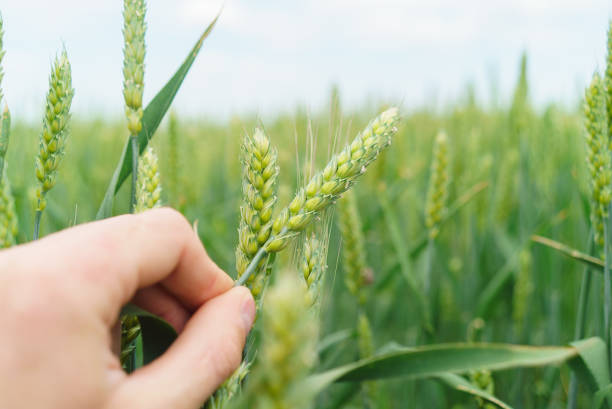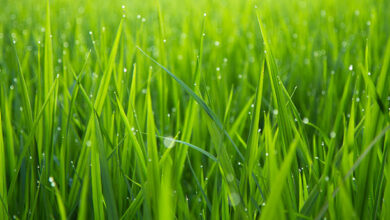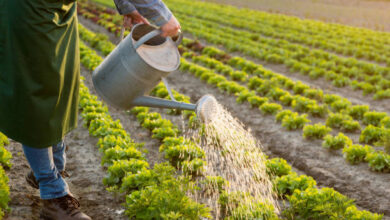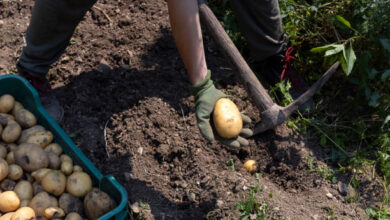
How to Grow and Utilize Winter Rye Seed: A Complete Guide
Winter rye is a robust and versatile crop that offers numerous benefits, from improving soil health to preventing erosion. Whether you’re a gardener, farmer, or landscaper, winter rye is a valuable addition to your soil management strategy. In this comprehensive guide, we’ll cover everything you need to know about planting, growing, and utilizing winter rye seed to enhance your garden or field.
What Is Winter Rye Seed and Why Use It?
Characteristics of Winter Rye Seed: Winter rye seeds are small, round, and typically brown or tan. They have a high germination rate and are known for their hardiness. Winter rye (Secale cereale) can withstand harsh winter conditions, making it an excellent choice for cold climates.
Benefits of Winter Rye: Winter rye offers several advantages:
– Soil Improvement: It enhances soil structure, increases organic matter, and improves fertility.
– Erosion Control: Its deep root system helps prevent soil erosion and stabilizes the soil.
– Cover Crop: Winter rye acts as a cover crop, suppressing weeds and preventing nutrient leaching during the off-season.
Types of Winter Rye: There are several varieties of winter rye, including ‘Aroostook’ and ‘Cereal Rye.’ Each variety has specific uses and characteristics, such as growth habits and resistance to diseases. Selecting the right variety depends on your specific needs and local growing conditions.
How to Plant Winter Rye for Optimal Growth
Best Time to Plant: The ideal time to plant winter rye is in late summer to early fall, about 6 to 8 weeks before the first expected frost. This allows the rye to establish roots before winter. In milder climates, it can also be sown in late winter or early spring.
Soil Preparation: Winter rye thrives in well-drained soil with a pH level between 6.0 and 7.0. To prepare the soil:
– Test Soil pH: Adjust pH levels if necessary using lime or sulfur.
– Improve Soil Structure: Incorporate organic matter such as compost or aged manure to enhance soil fertility and drainage.
Planting Instructions: Follow these steps for successful planting:
– Sow Seeds: Broadcast winter rye seeds evenly over the soil surface.
– Seed Depth: Lightly cover seeds with soil, approximately 1 inch deep. Winter rye seeds need light to germinate, so avoid burying them too deeply.
– Spacing: Sow seeds at a rate of 1 to 2 pounds per 1,000 square feet. This ensures adequate coverage and competition against weeds.
– Watering: Water gently to ensure good seed-to-soil contact. Keep the soil consistently moist until seeds germinate, which usually takes 7 to 14 days.
Container vs. Field Planting: While winter rye is typically grown in fields, it can also be grown in large containers. Ensure containers have drainage holes and provide ample space for root growth. For field planting, choose an area with good sunlight and minimal competition from other plants.
YOU MAY LOVE TO READ
Buckwheat SeedS: Benefits, Uses, and Growing Tips
Wheat Seeds: Everything You Need To Know
Morning Glory Seeds: Everything You Need to Know
Essential Care Tips for Healthy Winter Rye Growth
Watering Requirements: Winter rye requires moderate watering. Keep the soil consistently moist but not waterlogged. Reduce watering during the winter months when growth slows.
Fertilization: Winter rye generally needs minimal fertilization. Apply a balanced, all-purpose fertilizer in the fall, if necessary. Avoid over-fertilizing, as excessive nutrients can lead to lush growth at the expense of root development.
Light and Temperature: Winter rye grows well in full sun to partial shade. It can tolerate cold temperatures and frost, but it benefits from sunlight during the growing season. Ensure it has access to sunlight during the fall and early spring.
Maintenance Practices: To maintain healthy winter rye plants:
– Weed Control: Regularly check for weeds and remove them to prevent competition for nutrients and water.
– Mulching: Apply mulch to help retain soil moisture and regulate temperature.
Troubleshooting Winter Rye Problems
Pests and Diseases: Winter rye is relatively pest-resistant but can occasionally face issues like:
– Pests: Watch for aphids and other insects. Use insecticidal soap or neem oil if necessary.
– Diseases: Common diseases include rye rust and mold. Ensure good air circulation and avoid excessive moisture to reduce the risk.
Growth Challenges: If winter rye shows signs of poor growth:
– Leggy Plants: Adjust light exposure or soil conditions if plants appear leggy.
– Poor Germination: Ensure proper seed depth and moisture levels during planting.
Environmental Factors: Address issues caused by environmental factors:
– Cold Stress: Protect young plants from extreme cold with mulch or row covers.
– Moisture: Ensure adequate drainage to prevent waterlogging.
Why Winter Rye is a Valuable Addition to Your Garden or Field
Soil Improvement: Winter rye significantly improves soil structure by adding organic matter and enhancing soil fertility. Its deep root system helps break up compacted soil and improves water infiltration.
Erosion Control: The extensive root network of winter rye stabilizes soil, preventing erosion and reducing runoff. This is particularly beneficial on slopes or areas prone to erosion.
Cover Crop Benefits: Using winter rye as a cover crop offers additional benefits:
– Weed Suppression: Dense rye growth helps suppress weeds and reduces the need for herbicides.
– Nitrogen Fixation: Winter rye can contribute to soil nitrogen levels, improving soil fertility for subsequent crops.
Conclusion
Growing winter rye from seed is a practical and beneficial choice for enhancing soil health, preventing erosion, and improving garden productivity. By understanding how to plant, care for, and utilize winter rye, you can reap the rewards of this hardy and versatile crop. Start planting winter rye today and experience its numerous benefits for your garden or field.




